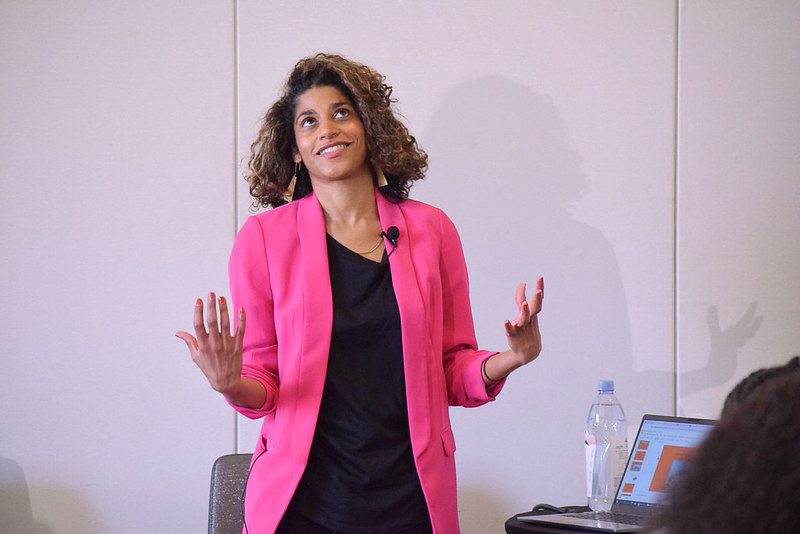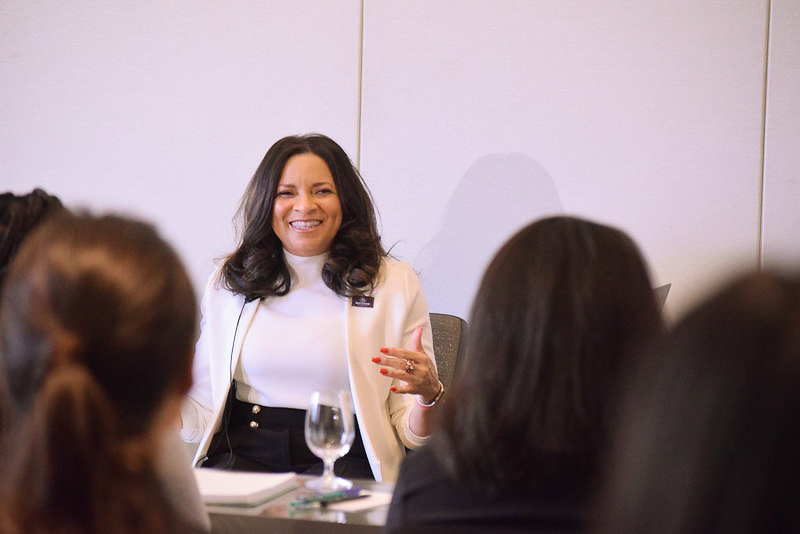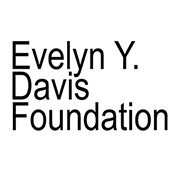5 takeaways:
➀ Look to media history for examples of a woman’s impact. Former CQ Roll Call Editor and Vice President Catalina Camia told Widening the Pipeline fellows that it can be hard to determine which challenge is more difficult — being a woman or being a person of color. That insight was voiced by pioneering journalist Alice Dunnigan, the first Black woman to hold press credentials for both Congress and the White House. “The Truman White House invited her in June of 1948, an election year, to go on one of Truman’s whistle-stop tours. Now back then, candidates would go across the country on trains and her boss, a man, said to her, ‘Women don’t go on trips like this.’ So she paid her own way.”
“While she was on board, she saw as the train was going through Missoula, Montana, there were students and people lined against the railroad tracks late one night. And one of them asked President Truman a question about civil rights. And his answer seemed to indicate that civil rights would be part of his platform in 1948. Because [Dunnigan] was there, because she fought to be there, there was a picture of her and President Truman shaking hands in more than a hundred weeklies the next day. She had a story that no one else had.”
➁ The sting of discrimination is long-lasting. Growing up in a Filipino family in the San Francisco Bay Area, Camia didn’t consider herself a minority because there were so many people who looked like her. The rude awakening came in Texas. “With my dark skin, a slant to my eyes and my names ending in vowels, people just assumed I was Mexican American. I once sat next to a prominent lawyer at a banquet, and I had been covering city government. And this lawyer after a few minutes talking to me said, ‘Wow. You speak really good English.’ “And I’m 23, 24, OK? My jaw fell open, and I summoned up the courage to say, ‘Well, of course, I do. I was born here. I was born in San Francisco. I’m an American.’ And that wouldn’t be the first time that I was subjected to what I call mistaken identity — really, ignorance.”
➂ Seek support from journalism affinity groups. Camia credits the Asian American Journalists Association with providing support throughout her career. She urged other journalists of color to seek similar support from such organizations as the National Association of Black Journalists, the National Association of Hispanic Journalists and the Native American Journalists Association. They exist, she said, “to help you find your power and to find your voice. The definition of ‘what is a journalist today’ and ‘who can be a journalist’ and ‘what is journalism’ is very, very different from when I started out. It used to be that you would just think about working for a newspaper or a TV network. But now, thanks to technology, anybody can be a journalist. But what sets you apart from just the content creator is the truth. You need to find the truth, verify your facts and have the integrity to gather that news and to stand by it.”
➃ The variety of opportunities for journalists is wider than ever before. In 2022, more than 6,000 journalists, representing about 600 news outlets, hold a credential to cover Congress, she said. “Most of them are radio and TV, news organizations, but the largest segment of growth is amongst niche media, specialized media. Organizations like CQ and Roll Call, Politico, Insider. Publications like Inside Washington Publishers, which publish a bunch of newsweeklies devoted to defense, health care. There are organizations now just devoted to climate change, defense — and the whole world really revolves around specialties now. And when I talk to young people about careers and political reporting and government reporting, I remind them that there’s this whole world out there that’s open to them, that goes beyond what I would call ‘traditional media.’ And it’s a great place to start when you are young.”
➄ Empathy can unearth hidden gems. Camia’s leadership style can be characterized by two words: nurturing and nudging. She shared an example from early 2021. “When we were getting ready to talk about what we would cover on Inauguration Day, I went to one of our health care reporters, who is of South Asian descent. She’s very quiet. And I said to her, ‘Didn’t you say to me that your mom grew up in Chennai? Isn’t that where Vice President Harris’s family is from?’ And I asked her, ‘What does Vice President Harris’s inauguration mean to you?’ She worked with our features editor to write a first-person account. And this is a young reporter whose specialty is health care, who covers everything from the children’s health program to Medicaid to the fight over abortion at the state level. But I just asked her, ‘Trust yourself and share your experience.’”
The Widening the Pipeline fellowship is sponsored by the Evelyn Y. Davis Foundation, Bayer AG, Johnson & Johnson and Twitter. NPF is solely responsible for the content.














